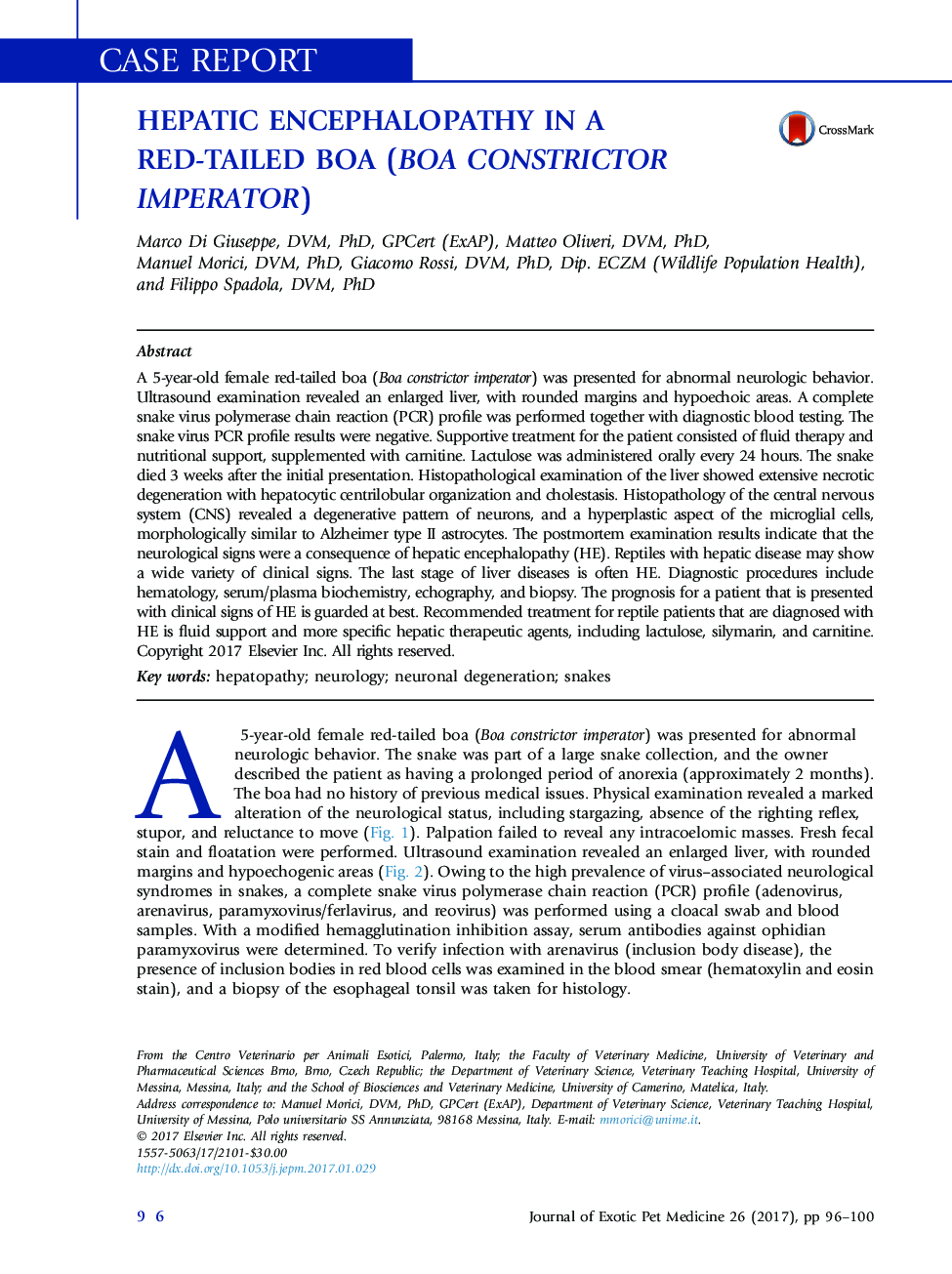| Article ID | Journal | Published Year | Pages | File Type |
|---|---|---|---|---|
| 5535740 | Journal of Exotic Pet Medicine | 2017 | 5 Pages |
A 5-year-old female red-tailed boa (Boa constrictor imperator) was presented for abnormal neurologic behavior. Ultrasound examination revealed an enlarged liver, with rounded margins and hypoechoic areas. A complete snake virus polymerase chain reaction (PCR) profile was performed together with diagnostic blood testing. The snake virus PCR profile results were negative. Supportive treatment for the patient consisted of fluid therapy and nutritional support, supplemented with carnitine. Lactulose was administered orally every 24 hours. The snake died 3 weeks after the initial presentation. Histopathological examination of the liver showed extensive necrotic degeneration with hepatocytic centrilobular organization and cholestasis. Histopathology of the central nervous system (CNS) revealed a degenerative pattern of neurons, and a hyperplastic aspect of the microglial cells, morphologically similar to Alzheimer type II astrocytes. The postmortem examination results indicate that the neurological signs were a consequence of hepatic encephalopathy (HE). Reptiles with hepatic disease may show a wide variety of clinical signs. The last stage of liver diseases is often HE. Diagnostic procedures include hematology, serum/plasma biochemistry, echography, and biopsy. The prognosis for a patient that is presented with clinical signs of HE is guarded at best. Recommended treatment for reptile patients that are diagnosed with HE is fluid support and more specific hepatic therapeutic agents, including lactulose, silymarin, and carnitine.
